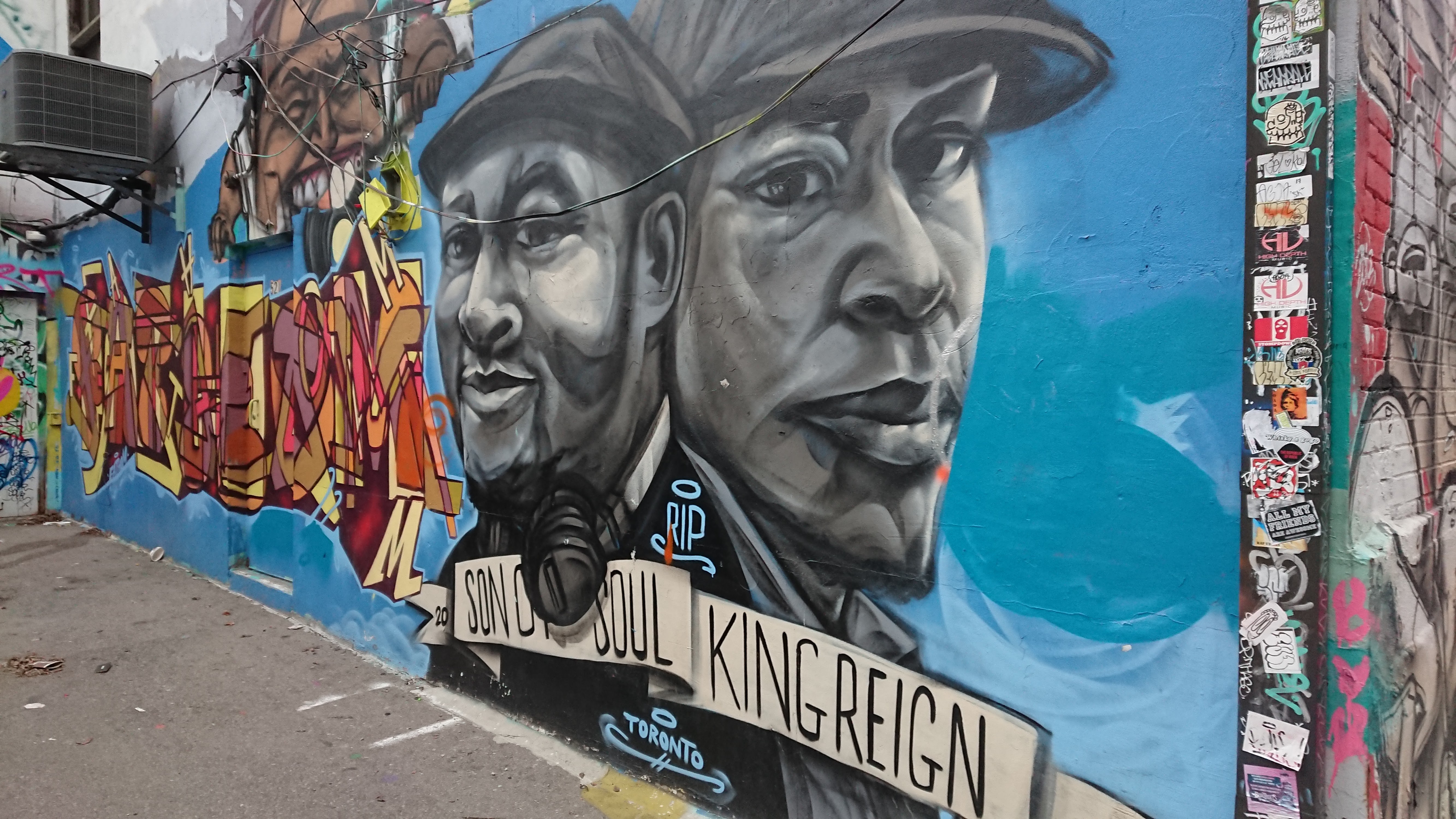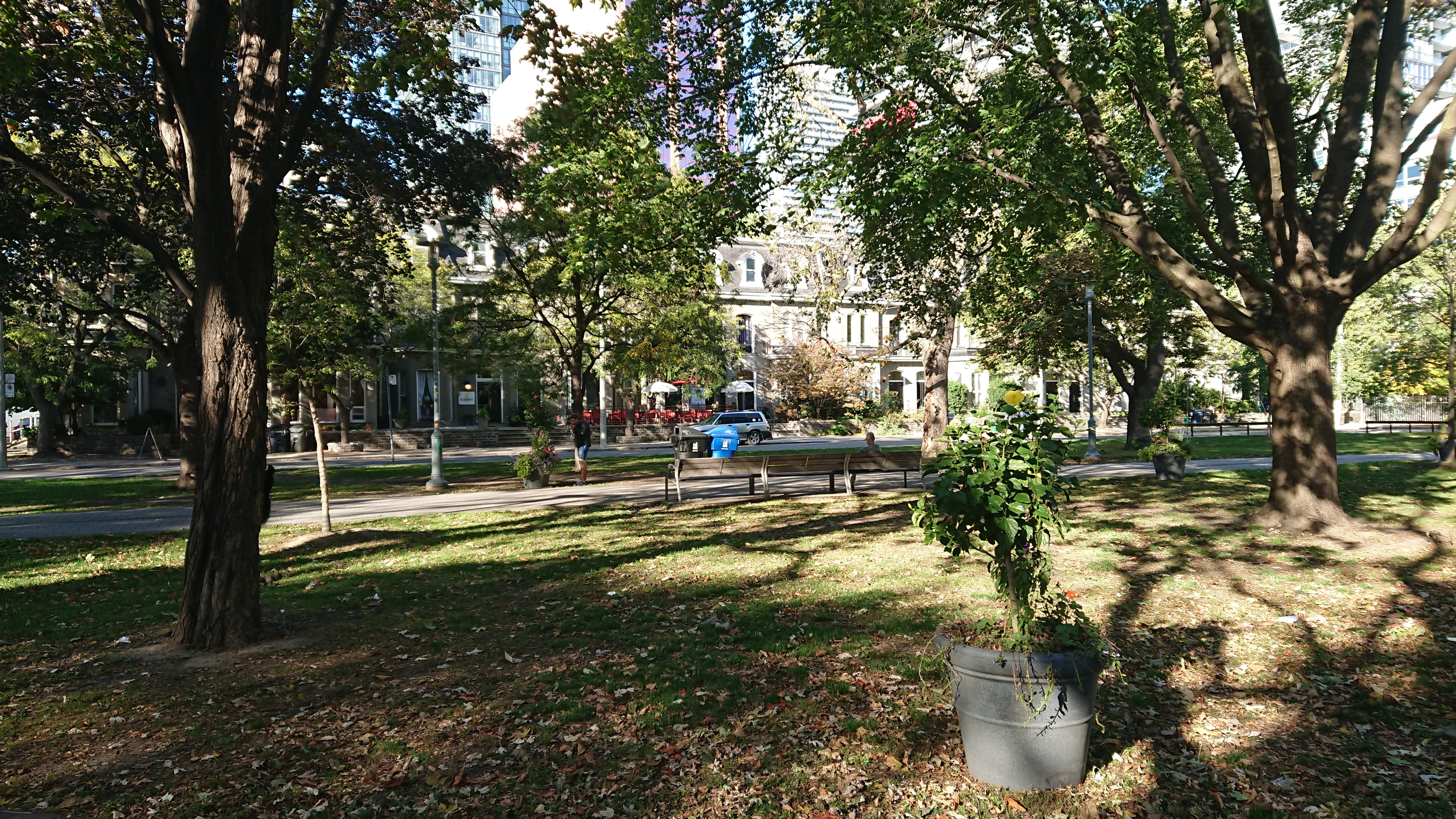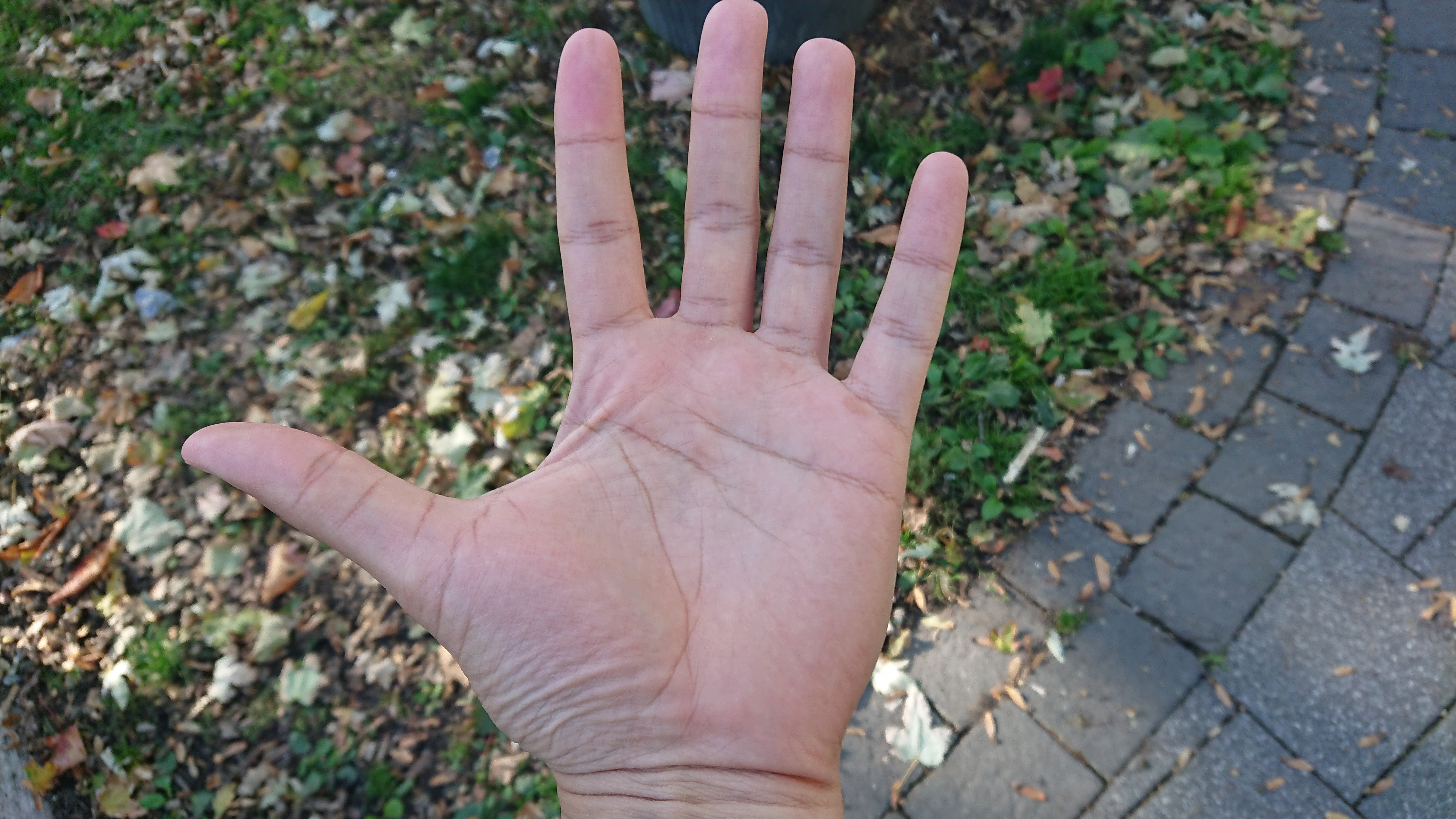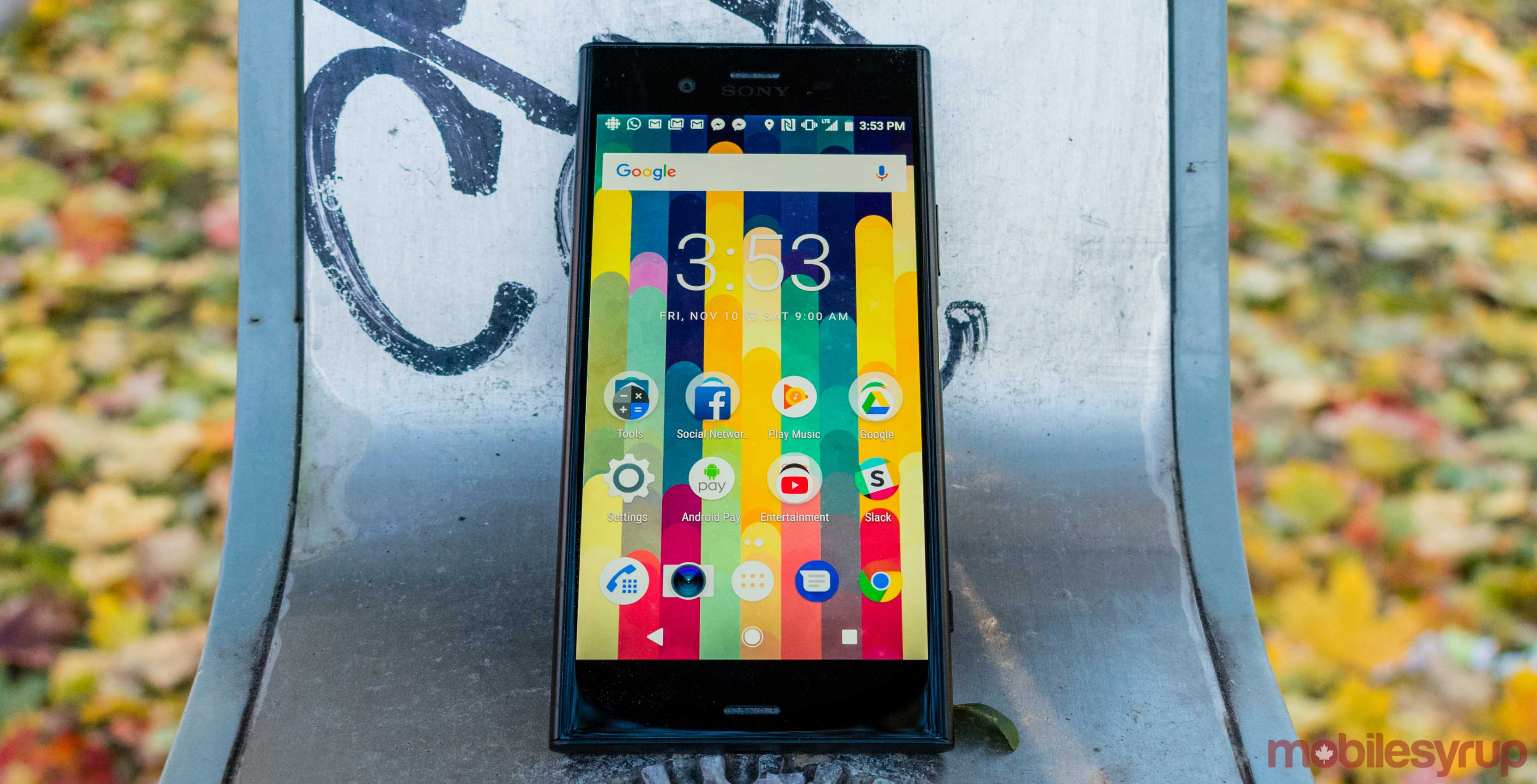
The Pros
- Great audio for a mobile device
- Near-stock Android on a premium-tier flagship device
- It's a Sony smartphone with a functioning fingerprint sensor
The Cons
- Boring display that's nothing special
- A design that's showing its age
- 3D Creator feature that doesn't shine
Please understand that if you were to use Sony’s Xperia XZ1, you would most likely be completely satisfied by your experience.
It’s an attractive, sturdy, powerful machine, that is more than proficient at accomplishing almost any task you ask of it. Not to mention, the phone costs $1,000 CAD outright — which makes it one of the more affordable premium-tier Android flagships on the market.
It’s a phone that I’d be proud to wholeheartedly recommend, if it wasn’t for the fact that there are far better options on the market.
Sony Xperia XZ1
Display
5.2-inch, IPS LCD display, 1920 x 1080 pixel, 16:9 aspect ratio
Processor
Snapdragon 835
RAM
4GB of RAM
Storage
64GB (expandable storage up to 256GB)
Dimensions (in.)
148 x 73 x 7.4mm
Weight
156g
Rear Facing Camera
19-megapixel (f/2.0, EIS)
Front Facing Camera
13-megapixel (f/2.0, EIS)
OS
Android 8.0 Oreo
Battery
2700mAh
Network Connectivity
GSM / HSPA / LTE / Band 66
Sensors
Fingerprint (side-mounted), accelerometer, gyro, proximity, barometer, compass, color spectrum
SIM Type
Nano SIM
Launch Date
August 31, 2017
Misc
Colours: Moonlit Blue, Venus Pink, Warm Silver, Black | IP68 water and dust resistant, Bluetooth 5.0. LDAC, Stereo speaker S-Force Front Surrounds
Display
Sony Xperia XZ1
5.2-inch, IPS LCD display, 1920 x 1080 pixel, 16:9 aspect ratio
Processor
Sony Xperia XZ1
Snapdragon 835
RAM
Sony Xperia XZ1
4GB of RAM
Storage
Sony Xperia XZ1
64GB (expandable storage up to 256GB)
Dimensions (in.)
Sony Xperia XZ1
148 x 73 x 7.4mm
Weight
Sony Xperia XZ1
156g
Rear Facing Camera
Sony Xperia XZ1
19-megapixel (f/2.0, EIS)
Front Facing Camera
Sony Xperia XZ1
13-megapixel (f/2.0, EIS)
OS
Sony Xperia XZ1
Android 8.0 Oreo
Battery
Sony Xperia XZ1
2700mAh
Network Connectivity
Sony Xperia XZ1
GSM / HSPA / LTE / Band 66
Sensors
Sony Xperia XZ1
Fingerprint (side-mounted), accelerometer, gyro, proximity, barometer, compass, color spectrum
SIM Type
Sony Xperia XZ1
Nano SIM
Launch Date
Sony Xperia XZ1
August 31, 2017
Misc
Sony Xperia XZ1
Colours: Moonlit Blue, Venus Pink, Warm Silver, Black | IP68 water and dust resistant, Bluetooth 5.0. LDAC, Stereo speaker S-Force Front Surrounds
A screen that’s kinda boring, bezels you just can’t ignore and a design that’s attractive but dated
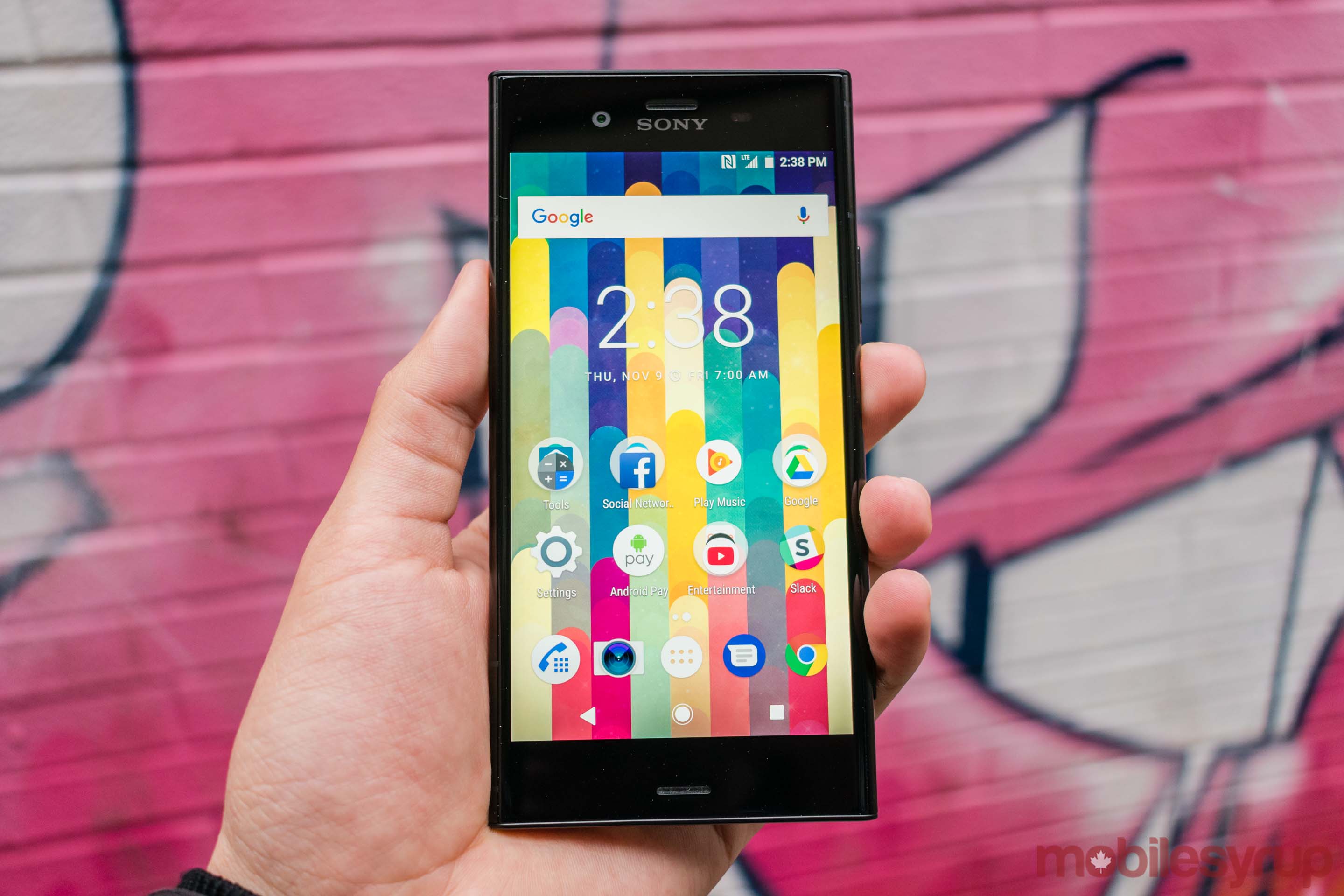
Let’s start with some quick numbers, right off the top.
The Xperia XZ1 features a 5.2-inch, 1920 x 1080 pixel Full HD IPS LCD display with an impressive pixel density of 424 pixels-per-inch. The screen is bright and HDR10 compliant, and it looks great. Sony boasts that it tried to transpose lessons learned from its Bravia televisions to build the XZ1’s display.
The phone features the company’s Triluminos display technology, and it’s safe to say that the screen is impressive. Colours pop and blacks are black, while television programs, movies and videos from Netflix and YouTube look great. The phone also allows users to customize the display’s colour gamut and contrast with three specific settings: ‘Professional mode,’ ‘Standard mode’ and ‘Super-vivid mode.’
When set to the Super-vivid mode, the phone’s display becomes — surprise, surprise — incredibly vivid. The differences between each mode aren’t incredibly noticeable at low brightness settings, but once you crank up the brightness, you really do start to notice how much deeper colours become in Super-vivid mode.
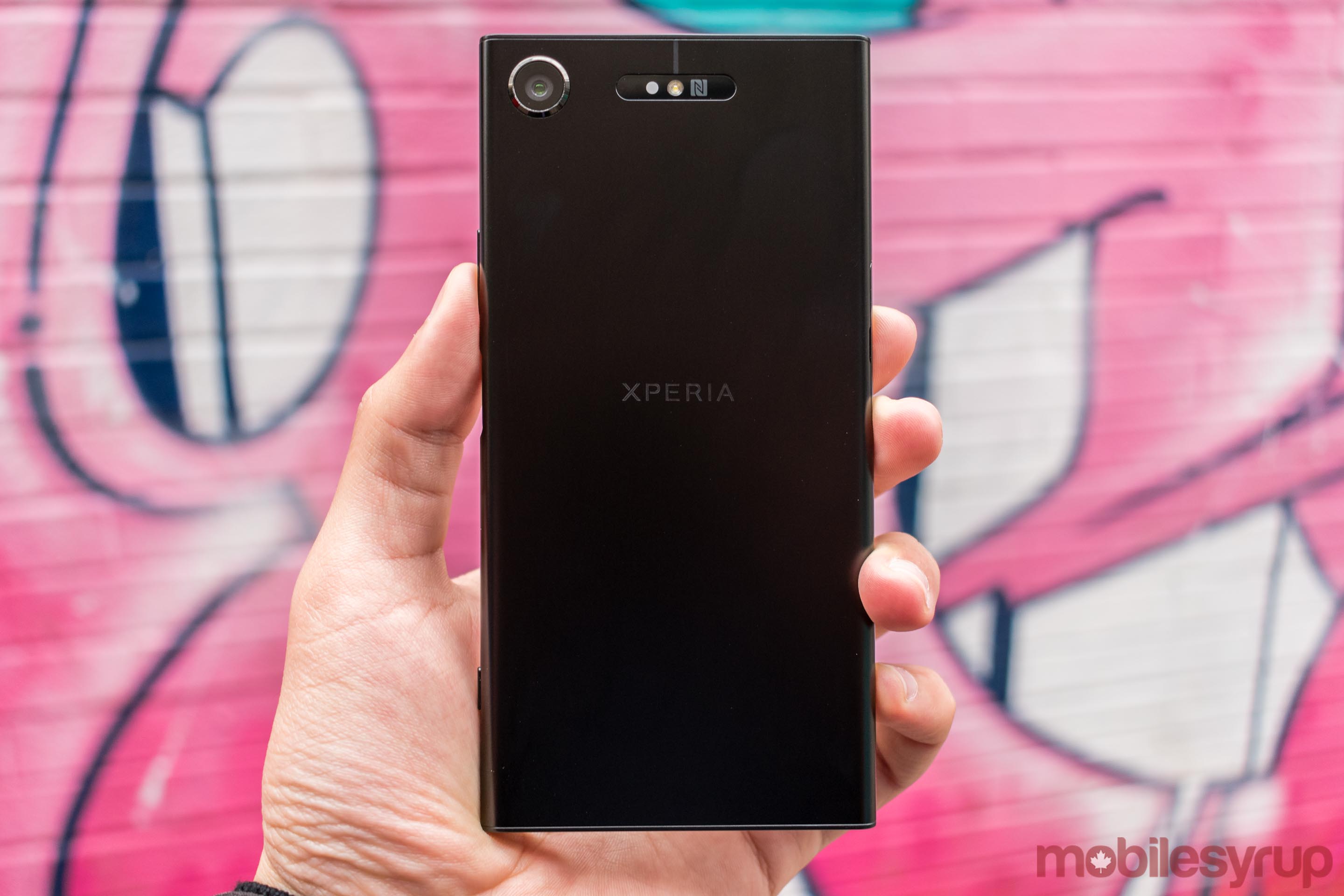
That being said — and this might sound strange to read — the XZ1 has a boring display. Again, the phone has a proficient screen that’s more than capable of rendering accurate colours across a wide range of use cases, but there’s ultimately nothing special about the XZ1 display that allows it to compete with devices like the Samsung Galaxy S8 or S8+, the Essential Phone, or even the Google Pixel 2 XL (issues and all).
All of those phones have more vibrant screens that reproduce colours more accurately — and more vividly — than the XZ1. To be clear, the XZ1 has a great screen, but great just doesn’t cut it anymore. Sadly, neither do the XZ1’s giant forehead and chin. Sony’s latest flagship has a design straight out of 2010, because modern Android smartphones don’t waste so much real estate on top and bottom bezels anymore.
Granted, those top and bottom bezels house dual front-facing speakers, so some might argue that the design choice is justified. At least, that’s what I would’ve said if Google didn’t also release an Android flagship smartphone with dual front-facing speakers this year. Sad for Sony, but there’s no excuse for bezels this large on a flagship smartphone anymore. Once you get over the fact that the phone looks like it was built with a different generation of smartphone design in mind, it’s hard to ignore just how attractive the phone really is. I’ve been using the black version of the XZ1 and even with my criticisms of the phone’s bezels, I still often find myself staring and taking in the sheer beauty of the device.
Once you get over the fact that the phone looks like it was built with a different generation of smartphone design in mind, it’s hard to ignore just how attractive the phone really is. I’ve been using the black version of the XZ1 and even with my criticisms of the phone’s bezels, I still often find myself staring and taking in the sheer beauty of the device.
The XZ1’s curved sides mean that the phone rests comfortably in my hands. The aluminum finish gives the phone a distinguished heft and weight. The Corning Gorilla Glass 5 front panel melds almost seamlessly into the sides, tricking the user into believing that the glass curves as well. It doesn’t, but that’s not really the point. Good design in all matters is supposed to facilitate the use of a device without being overly intrusive or gaudy. And barring the obvious exception, there’s nothing intrusive about this device.
Sony has undeniably built a premium device and the quality of the XZ1 is noticeable as soon as you glance at it. Even the buttons — often an overlooked aspect of good phone design — feel tactile enough to be accessible but just mushy enough to be comfortable. Continuing a Sony tradition, the phone’s fingerprint sensor — and yes, scorned Canadian Sony fans, there is a fingerprint sensor — is built into the XZ1’s power button.
A quick tap wakes the screen so you can check notifications, while holding your thumb over the power button completely unlocks the device. Sadly, you do actually have to push the power button in order to unlock the device. Unlike certain other Android phones with rear- or front-facing fingerprint sensors, you can’t activate the XZ1’s sensor just by touching it. I’ll admit, I did find the fingerprint sensor a little annoying at first. I’m a bit of a notification nut and I also use my phone in place of a wristwatch, so the idea of needing to unlock my phone to check the time strained comprehension. Still, I figured out that a quick tap is all I need to wake the display without unlocking the phone in its entirety.
Stalwart processing power and acceptable battery life
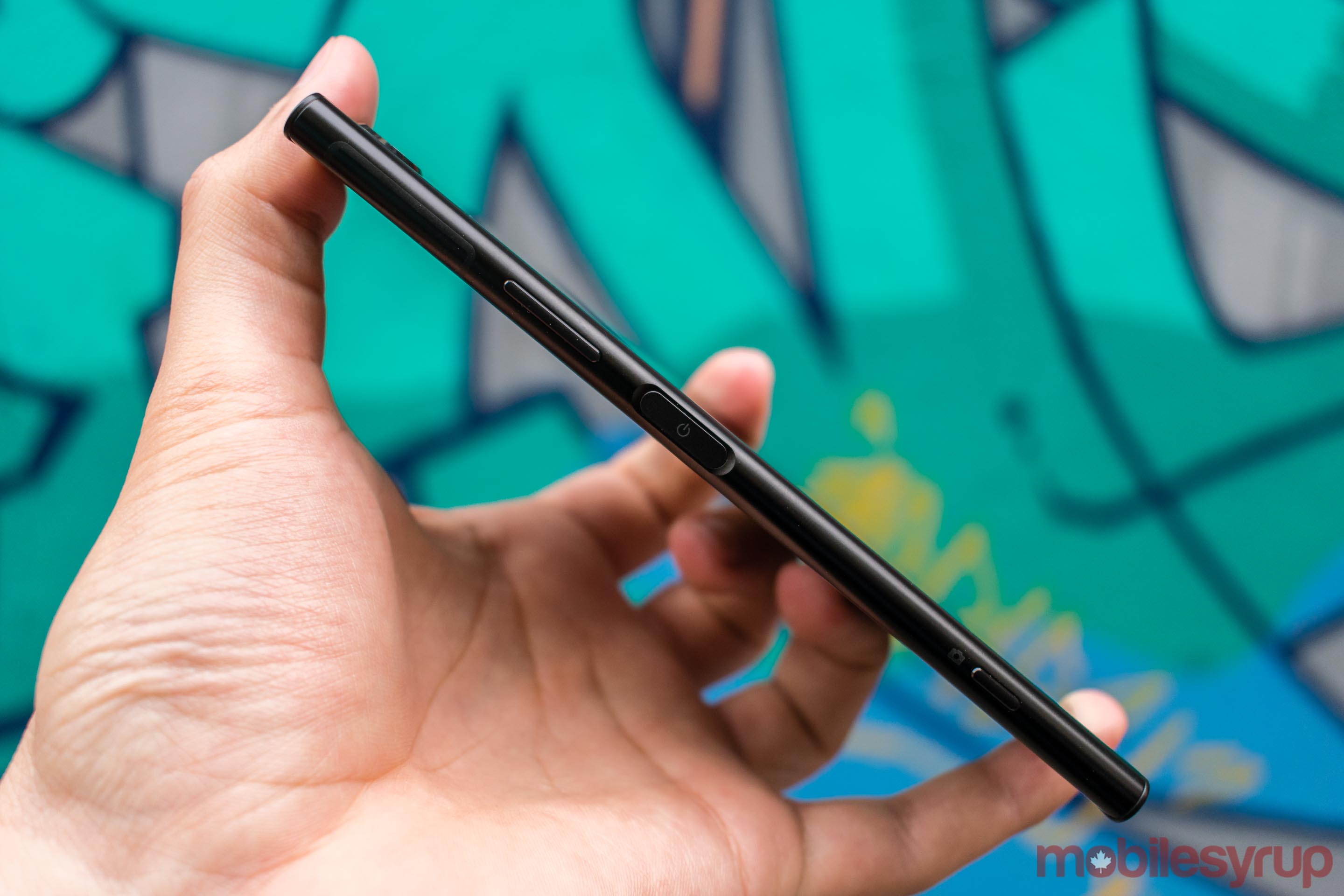
To be perfectly honest, with a Snapdragon 835 processor powering the XZ1, as well as a premium-tier average of 4GB of RAM, I would have been shocked and disappointed if the XZ1 wasn’t able to deliver on performance. Thankfully, I was happy to find that the XZ1 breezed through resource-intensive apps and games — Deus Ex Go, Modern Combat, N.O.V.A. Legacy, and the like. I’m also happy to report that the phone maintained a reasonable temperature throughout all taxing processes. The phone never became hot or uncomfortable-to-hold, even during the most intense gaming sessions.
As for the subject of battery life, the XZ1’s 2,700mAh battery is capable of spitting out roughly one-and-one-quarter days worth of life with low to moderate use. This means checking emails and reading the news during my morning commute, sending text messages and making phone calls during work, and then playing some games on my way back from work.
However, moderate to heavy use — which in my case meant binging all of Stranger Things 2 using Wi-Fi in a single sitting — drained the battery in about four-and-a-half-or-so hours. Your mileage will certainly vary, but rest assured that should you decide to drain your battery, you won’t have to wait too long for the phone to charge, as the XZ1 features Qualcomm’s Quick Charge 3.0 tech.
Sound quality that actually sounds like quality

If there’s any one reason to truly consider purchasing the Sony Xperia XZ1, it’s the device’s two front-facing stereo speakers. Sony calls the XZ1’s speakers ‘S-Force Front Surround Sound’ speakers, which is really just a fancy way of saying that the device can project some serious sound power.
And make no mistake, the phone has some powerful sound. Whether you’re listening to music on Spotify or Google Play Music, watching videos on YouTube, or watching movies and television programs on Netflix or CraveTV, the XZ1’s speakers deliver some seriously great audio. Treble notes sound clear and pristine, midtones get the emphasis they deserve, while bass notes resonate and reverberate without sounding overbearing.
Sony’s marketing also emphasizes the fact that the phone features DSEE HX Hi-Res Audio, as well as LDAC technology, and digital noise cancelling that (when paired with noise cancelling headphones) delivers “up to 98 percent exterior noise reduction.” The phone also has ClearAudio+ that delivers on “enriched sound.” Furthermore, the XZ1 carries Qualcomm’s aptX HD audio standard, which means that Bluetooth headphones equipped to transmit and receive aptX HD information — like the Libratone Q Adapt headphones — offer even better sound quality.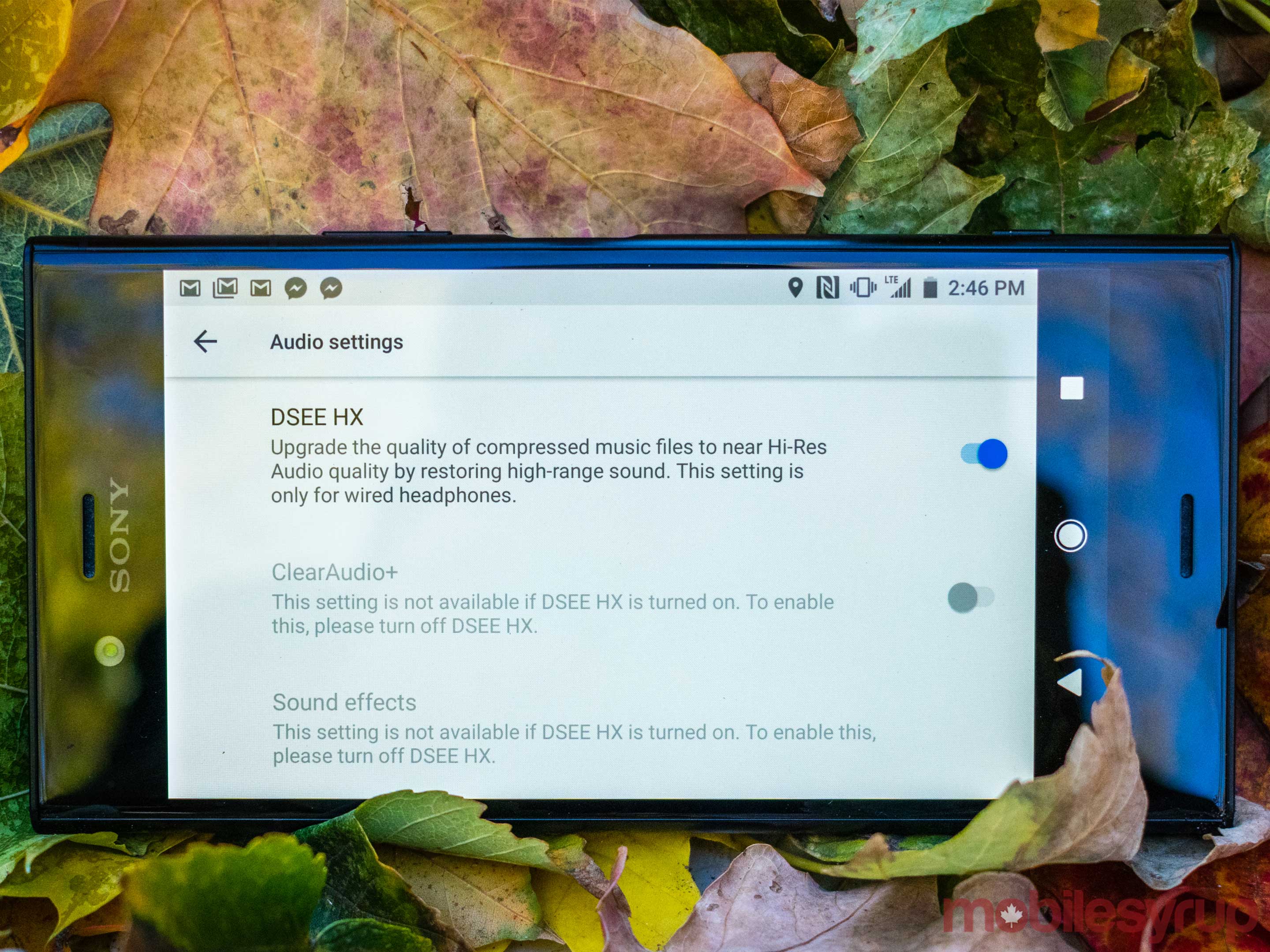 However, it’s important to cut through all of the marketing babble to deal with the simple facts. Most people will notice that the phone gets loud and that the phone’s audio quality is better than some of the other phones on the market. Additionally, most users will enjoy being able to set up custom audio profiles for use with wired and wireless headphones.
However, it’s important to cut through all of the marketing babble to deal with the simple facts. Most people will notice that the phone gets loud and that the phone’s audio quality is better than some of the other phones on the market. Additionally, most users will enjoy being able to set up custom audio profiles for use with wired and wireless headphones.
However, if you’re an audiophile, you probably already have a custom portable rig that’s more than capable of providing you with the sound quality you desire.
If you just so happen to be an audiophile looking for a phone capable of boosting and amplifying your music to desirable, then yes, the Xperia XZ1 will most likely meet your standards. Since audio is often a subject issue, however, maybe try the phone with your music first before making a purchase.
A camera that gets the job done, and that’s about it
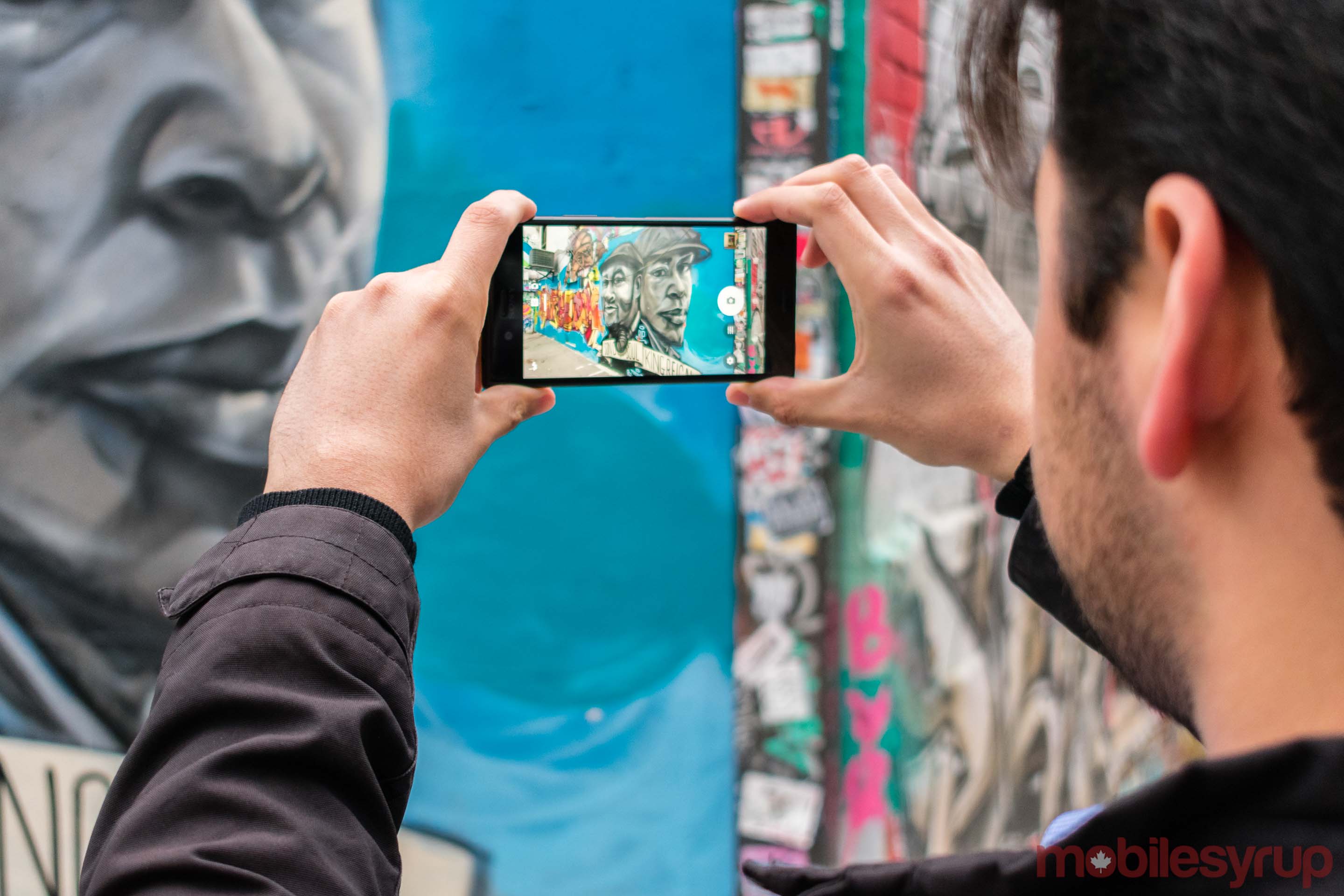 Before you look at the XZ1 and criticize it for its lack of dual camera setup, it’s important to recognize that the phones with one of the best cameras ever released on a mobile device — the Pixel 2 and Pixel 2 XL — are both devices with a single rear shooter.
Before you look at the XZ1 and criticize it for its lack of dual camera setup, it’s important to recognize that the phones with one of the best cameras ever released on a mobile device — the Pixel 2 and Pixel 2 XL — are both devices with a single rear shooter.
That being said, to suggest that the XZ1’s camera is comparable to that of the 2017 Pixel twins — or the 2016 Pixel twins for that matter — is a fallacy.
Don’t get me wrong, the XZ1’s 19-megapixel camera is good, but much like the device’s screen, the images that this phone produces are — for lack of a better word — a little boring. Colours don’t pop, blacks aren’t deep or vivid, the device struggles in especially bright and especially dark environments and it’s difficult to not notice quite a bit of processing once you zoom in on a photo.
Granted, users can fix some of these problems using the phone’s manual controls — which puts shutter speed, aperture, ISO and white balance control in humans hands.
The XZ1 can also shoot slow-motion video at 960-frames-per-second. This effect works quite well, but I’m not fully convinced that being able to shoot slow-motion video is enough of a reason to choose the XZ1 over other smartphones with better cameras.
Here’s the thing. The XZ1 takes good photos, but that’s something that can be said about every single premium-tier flagship phone on the market (except, if you listen to MobileSyrup’s Igor Bonifacic’s thoughts on the Essential Phone). The simple fact of the matter is that the XZ1’s camera doesn’t hold a candle to cameras on devices like the Samsung Galaxy S8/S8+ or the Galaxy Note 8, of the LG V30, and certainly not to the iPhone 8/8Plus, or the iPhone X.
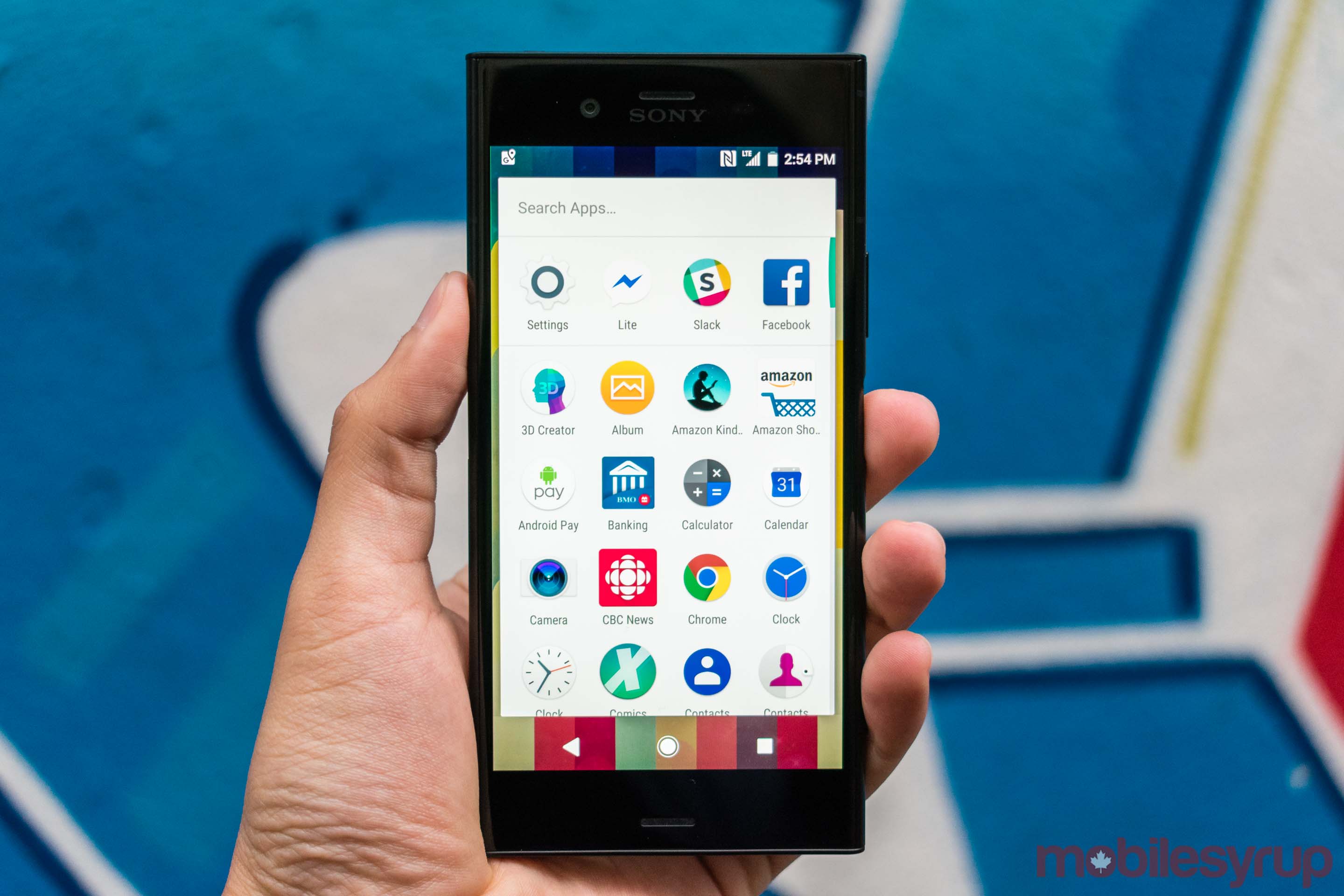
In fact, the XZ1’s camera also isn’t a ‘serious contender’ like Huawei’s P10 or P10 Plus, which have repeatedly proven to be exceptional cameras on devices that are significantly cheaper than Sony’s latest.
There’s also an issue that the camera app is sometimes slow to open and sometimes crashes. These weren’t issues that occurred often enough to be a problem, but it’s still something to consider.
Ultimately, what should be an exceptional camera — since Sony’s standalone cameras are some of the finest products on the market — is simply adequate. For a device that costs as much as the XZ1 does, that’s disappointing.
Near-stock Android and very few gimmicks that are fit to print
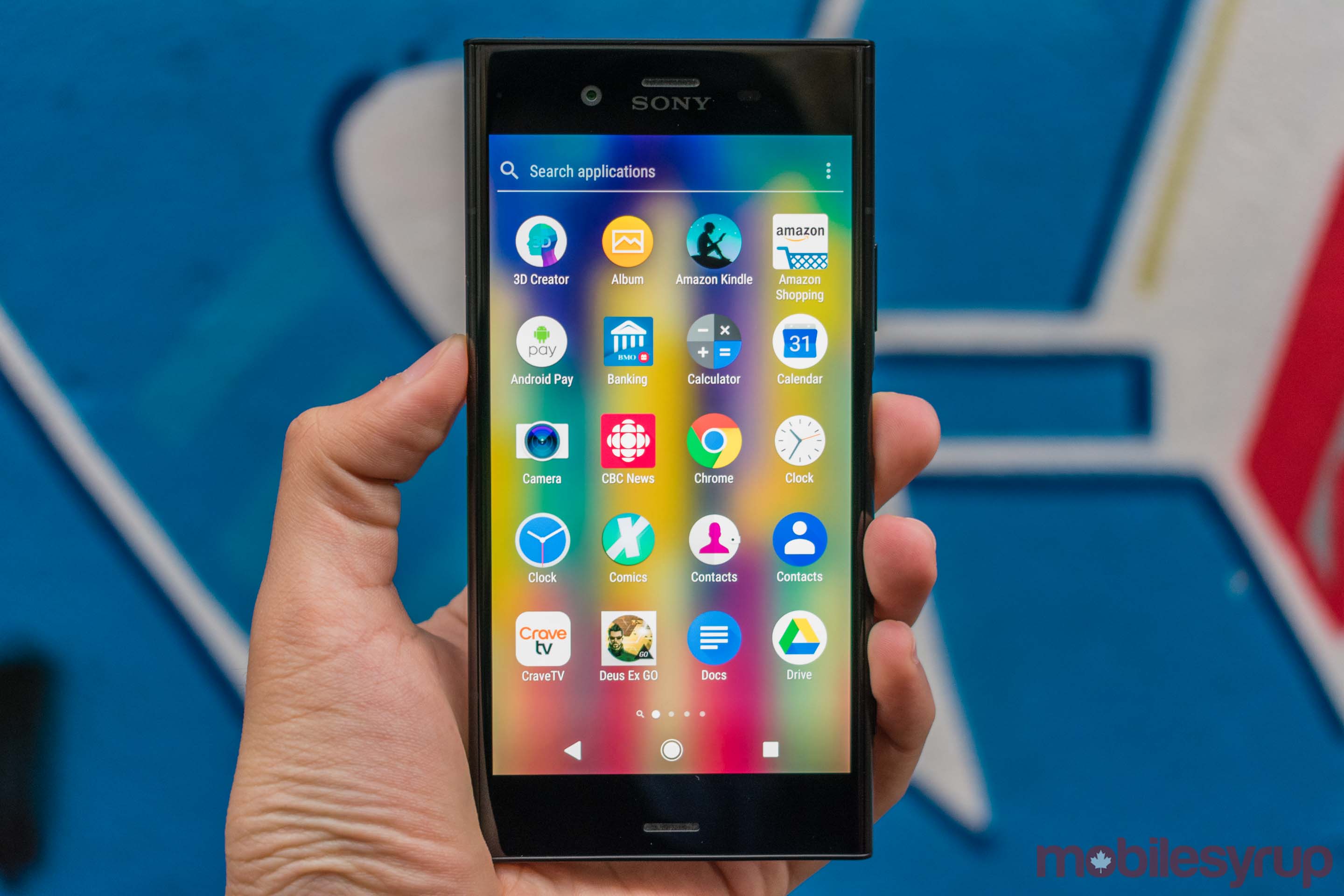
In the world of modern Android, there exist two kinds of operating system philosophies. On one hand, there are manufacturers that load their phones with Google’s stock operating system; on the other hand, there are manufacturers that choose to lay a custom skin overtop of an already wonderful mobile OS. The interesting news is that Sony’s moved forward with its own third way: a blend of both stock Android and a custom skin.
Sony ships the phone with a custom Xperia launcher, as well as duplicates of most of the major Android apps, but not a custom skin. In the age of modern Android, however, you can not only install the Google Now launcher and Google Assistant on your phone, you can also disable quite a few of Sony’s stock apps and transform your phone into what is effectively a stock Android device. 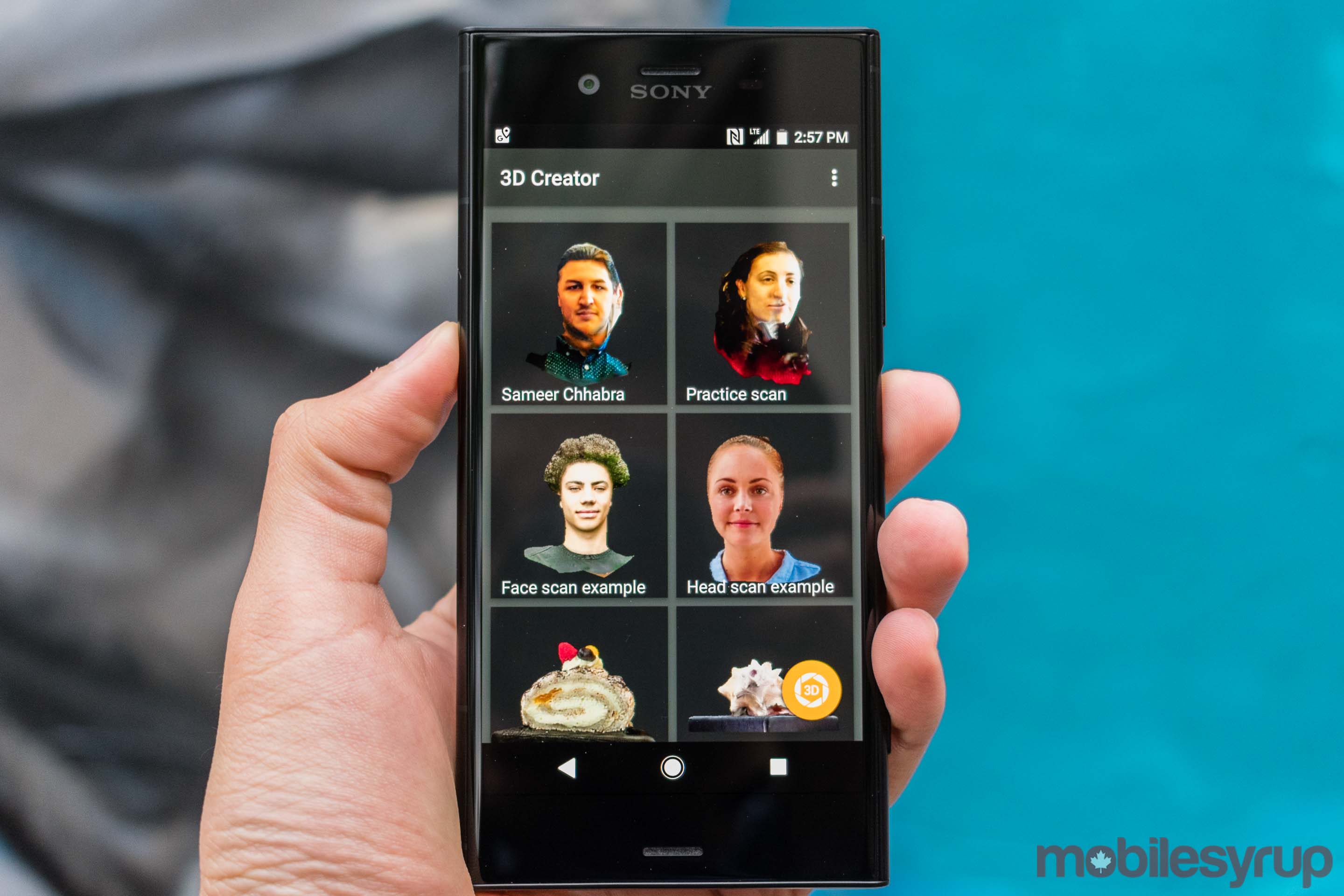
Yes, you still have to deal with the fact that your phone’s onboard storage is clogged with a series of irremovable Sony apps, but with 64GB of internal storage — as well as the ability to add an additional 256GB of storage thanks to a microSD card — you really don’t need to worry about running out of room on your phone.
In fact, all things considered, Sony’s latest flagship device is actually quite free of any additional apps or features that really distinguish it from its premium-tier flagship siblings. There’s a 3D scanner app that lets you scan faces, bodies, food and freeform objects, but that’s about it. The 3D scanner works adequately. In my tests, I’ve found that it takes quite a bit of practice to fully utilize this feature. As for its utility, I’m actually not sure who this 3D scanner is for.
You can import your scans into games or even 3D print them, but if you’re in the 3D printing business or you’re looking for a 3D scanner for medical purposes, you’re most likely not going to purchase this $1,000 phone.
A brief note for my fellow Freedom fighters
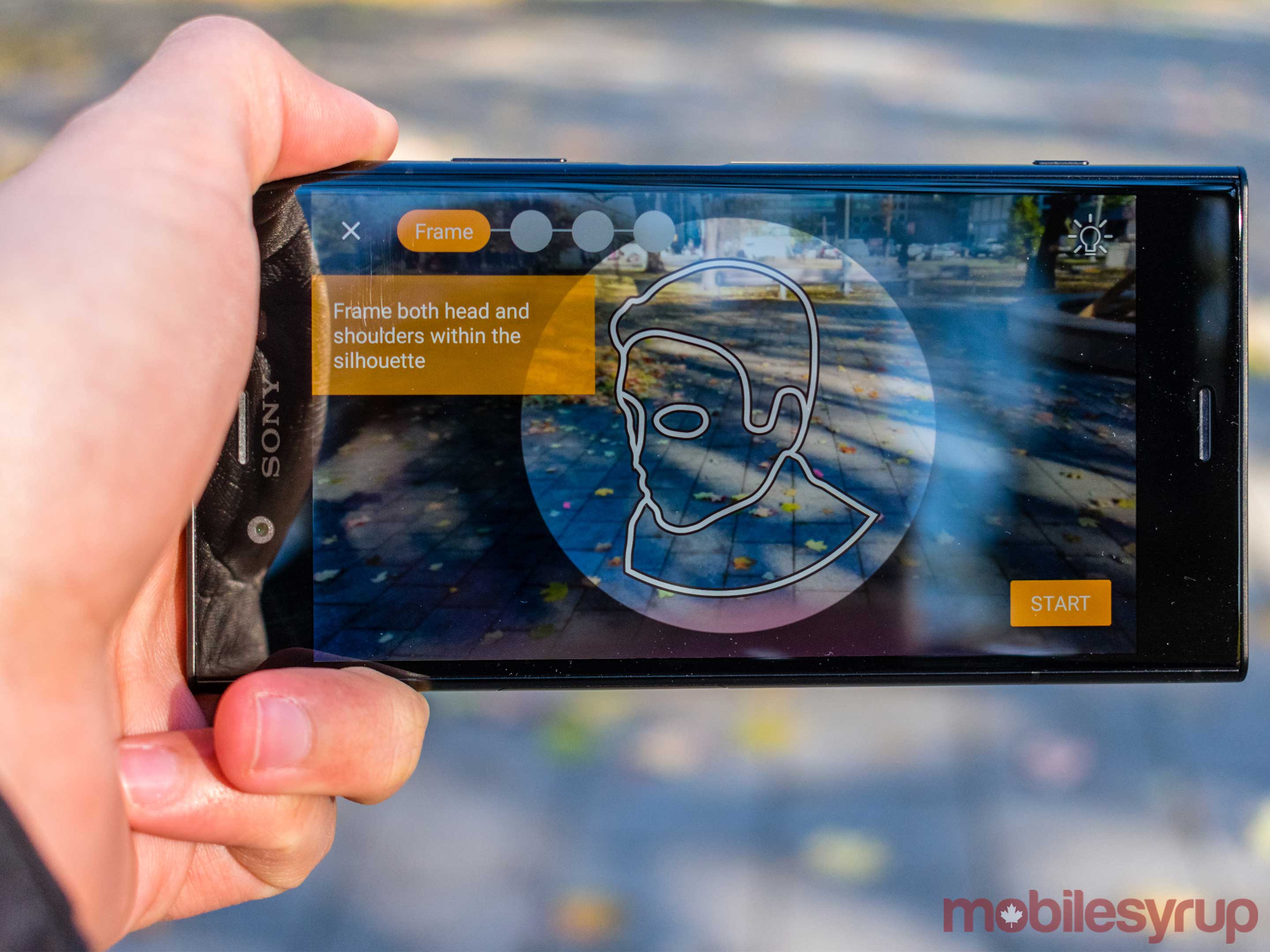
As a Freedom Mobile subscriber myself, I was very excited to pop in a Freedom SIM and use the XZ1’s band 66-capable LTE. As it turns out, and this might have been a direct result of the fact that I reviewed an XZ1 provided by Sony and not Freedom, the phone didn’t cling to Freedom’s ‘traffic-free’ LTE network.
The phone dipped down to 3G quite often. When it did connect to LTE, however, data speeds were incredible.
Justified equivocation
If it at seems like I’m at all equivocating on the Xperia XZ1’s virtues, understand that that is a result of a desire to be objective. Under any conceivable circumstance -- according to most measures and metrics of worth -- this is a device worth owning.
However, all modern premium-tier Android flagships are worth owning in some way. They’ve all got good or great or incredible screens. They’ve all got the same Snapdragon 835 processor and 4GB or 6GB or 8GB of RAM. They’ve all got great cameras. They’ve all got USB-C fast charging. They might not all have headphone jacks, but no matter what I say, please don’t decide to buy one $1,000 phone over another just because of a headphone jack.
The issue to address, then, is what makes these premium devices different -- what truly makes one expensive piece of technology worth owning over another? Design is one factor. Ecosystem -- the smartwatches, the wireless headphones, the inter-device compatibility, the accessories -- is another. Camera quality -- and I’m talking about the ludicrously high quality shooters attached to phones like the 2017 Pixel twins -- is yet another.
Therein lies the problem. Compared to its premium-tier siblings, there’s very little that helps the XZ1 stand out from the pack.
All of which is to say, dear reader, please understand that if you were to use Sony’s Xperia XZ1, you would most likely be completely satisfied by your experience. However, if you actually are in the market for a premium, flagship Android smartphone, the Xperia XZ1 almost definitely isn’t for you.
"The XZ1 is a great phone that just doesn't stand out in a world full of great phones."
MobileSyrup may earn a commission from purchases made via our links, which helps fund the journalism we provide free on our website. These links do not influence our editorial content. Support us here.


